This dignified British queen wore silver wigs by day, gold wigs at night and many, many strings of pearls. Yet her mother was a fat duchess who fled abroad to escape her creditors…
I was too young to see Queen Mary, but my mother told me that Queen Mary might have seen me.
In her final years, the Queen was often taken for an afternoon stroll through the parks from Marlborough House – and I was a Hyde Park baby in my pram.
She is not far away for me. But for the current generation Queen Mary, grandmother of Queen Elizabeth II is a figure from another world.
She wore long skirts and jackets, she was known for her toques and. Although she had beautiful hair, she wore a wig: silver hair during the day and golden hair at night.
Queen Mary had an austere, even forbidding appearance. But she had intelligence and humor, writes Hugo Vickers
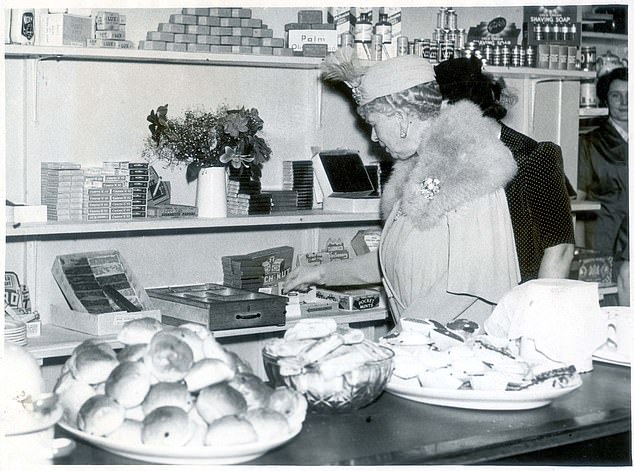
Queen Mary, accompanied by the Duchess of Beaufort, the railway canteen after a civic reception in Swindon
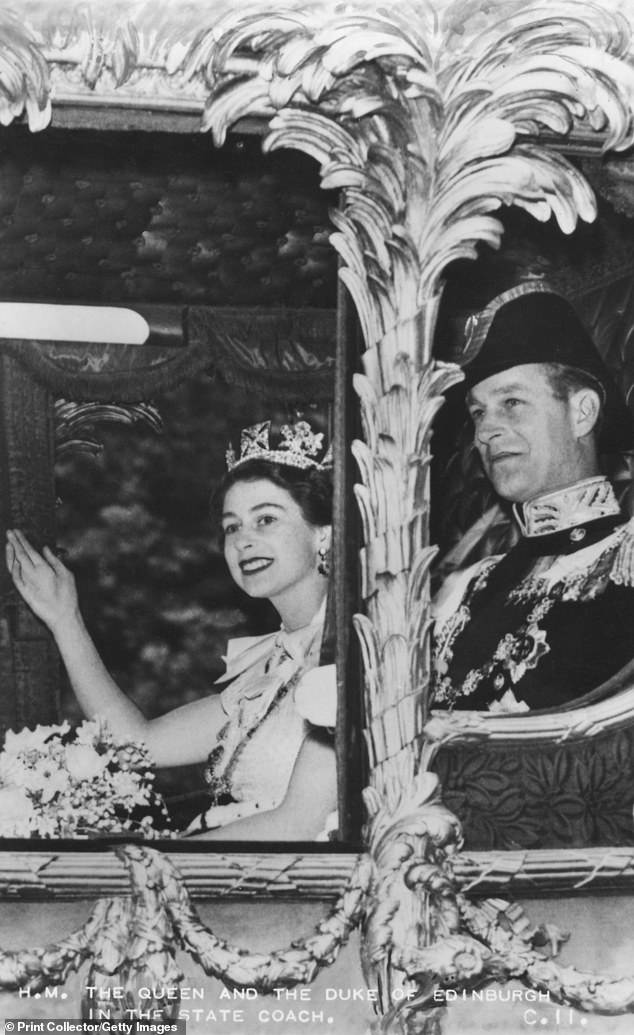
Prince Philip accompanied the Queen in the Gold State Coach on the way to the coronation in 1953. Queen Mary had disapproved of the plan
She looked statuesque and forbidding, but beneath that exterior lay humor and intelligence.
She had a strong influence on the Queen and took her to London’s major sights and exhibitions as a child.
When Queen Mary died on March 24, 1953, the queen noted that it was difficult to think of the world without her in it.
There is, of course, a persistent myth about Queen Mary. It’s that she was a kleptomaniac – that people hid their antiques when she visited because she pointed to a piece of furniture or china she liked and expected it to be given to her.
It must have happened once or twice before the rumor started, but in my long research into her life I never came across a concrete example.
She stayed with her niece, the Duchess of Beaufort, at badminton throughout the war and not a single item was captured.
She was fortunate to have the masterful James Pope-Hennessy as her biographer.
He managed to write an elegant and sympathetic biography, telling her story with verve. His work was so subtle that he got away with some memorable lines.
His description of Queen Mary in later life at Marlborough House is classic: ‘In the middle of this glittering Georgian enclave in rumpled post-war London, visitors found Queen Mary herself, standing upright, distinguished, perhaps dressed in blue velvet or in shades of light gray, around her neck her hair ropes of matchless pearls.”
Strangers considered her “representative of another era,” but, Pope-Hennessy wrote, this was a misjudgment, as she would venture out to attend the proceedings of a juvenile delinquent court, or to enjoy Oklahoma or Annie Get Your Gun.
Queen Mary had her specific standards.
When her housekeeper was stabbed by intruders and ended up in St George’s Hospital in 1947, the main cause of her outrage was that a royal palace had been invaded.
She disapproved of the idea of Prince Philip accompanying the Queen in the Gold State Coach on the way to the coronation in 1953, but she was impressed by Prince Philip’s scholarly speeches in the late 1940s.
Worse still, she could not understand how her son, the Duke of Windsor, could abdicate.
She pointed out to him that while so many young men had given their lives in the (First World War) war, he was ‘unwilling to make a lesser sacrifice’.
Queen Mary rose to a position of great majesty, but her life did not follow conventional lines. She was born at Kensington Palace in May 1867.
Her mother was Princess Mary Adelaide, daughter of Prince Adolphus, Duke of Cambridge – a granddaughter of George III and a cousin of Queen Victoria.
Princess Mary Adelaide was extremely fat.
In the quest to find her a husband, Lord Clarendon became somewhat desperate.
He wrote: ‘No German prince will undertake such an extensive undertaking.’
Except maybe an impoverished one. She married the Duke of Teck, a morganatic member of the Royal House of Württemberg.
Princess May (as Queen Mary was called as a young girl) lived an itinerant life. With no money, her parents moved to Florence for two years to avoid their creditors.
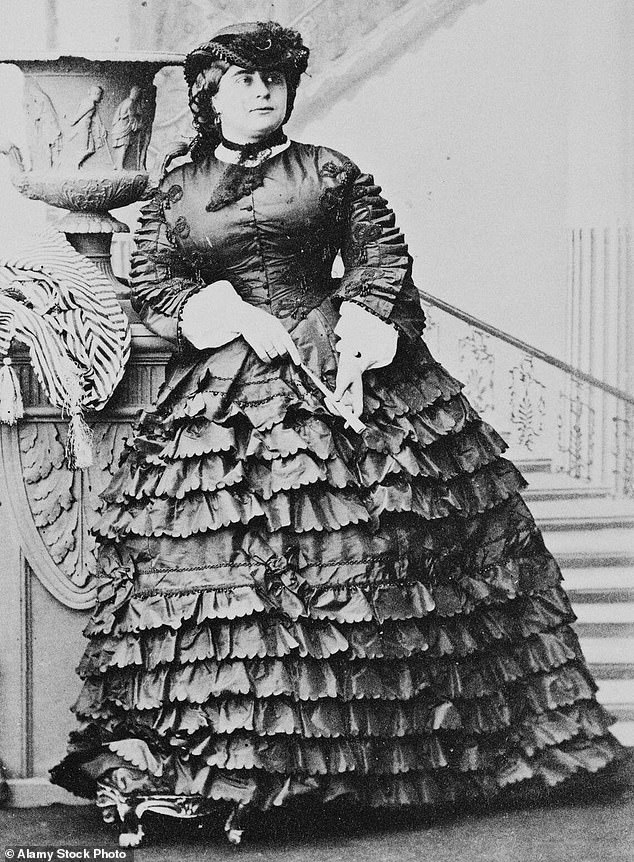
Princess Mary Adelaide, daughter of Prince Adolphus, was the mother of Princess May of Teck
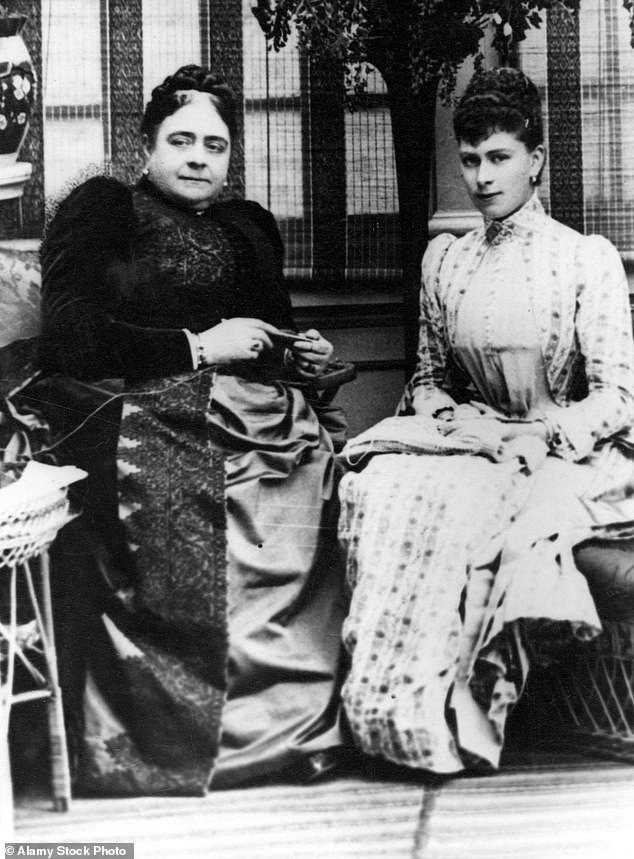
The Duchess of Teck, formerly Princess Mary Adelaide of Cambridge, sits with her daughter May, later Queen Mary, in White Lodge in Richmond Park, 1893
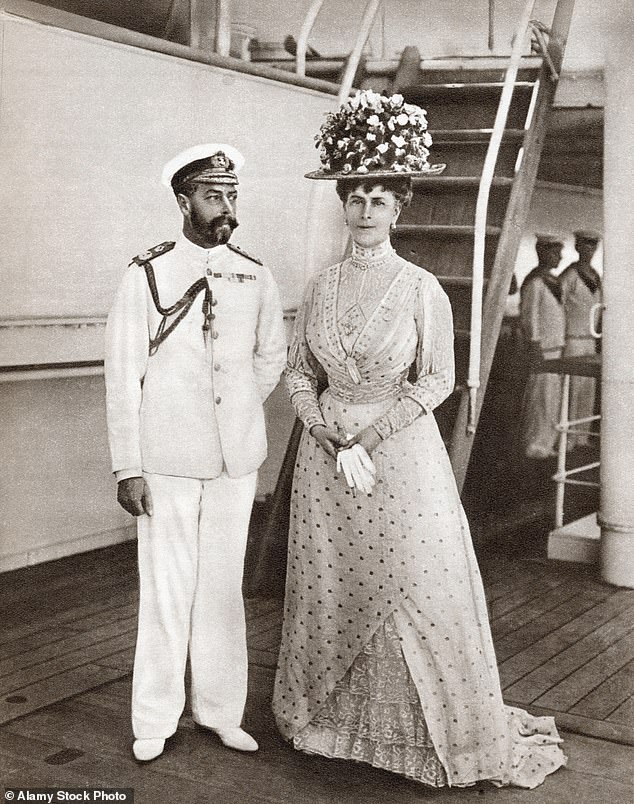
King George V and Queen Mary board the ocean liner Medina during a visit to India in 1911
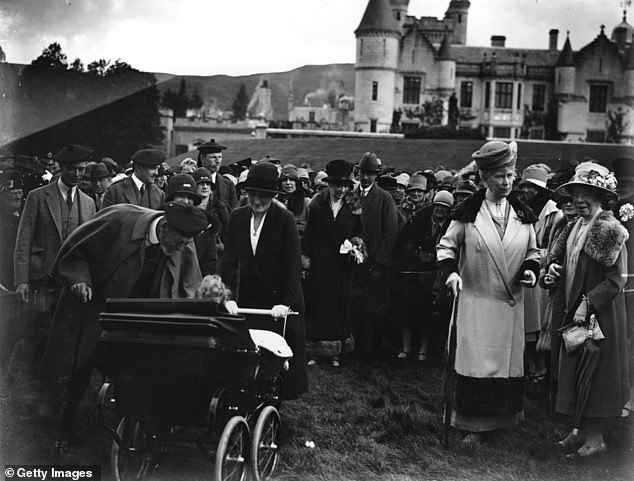
The Royal Garden Party at Balmoral. From far left to right are: the Duke of York, King George V, Queen Mary and the Duchess of York. Princess Elizabeth is sitting in the stroller
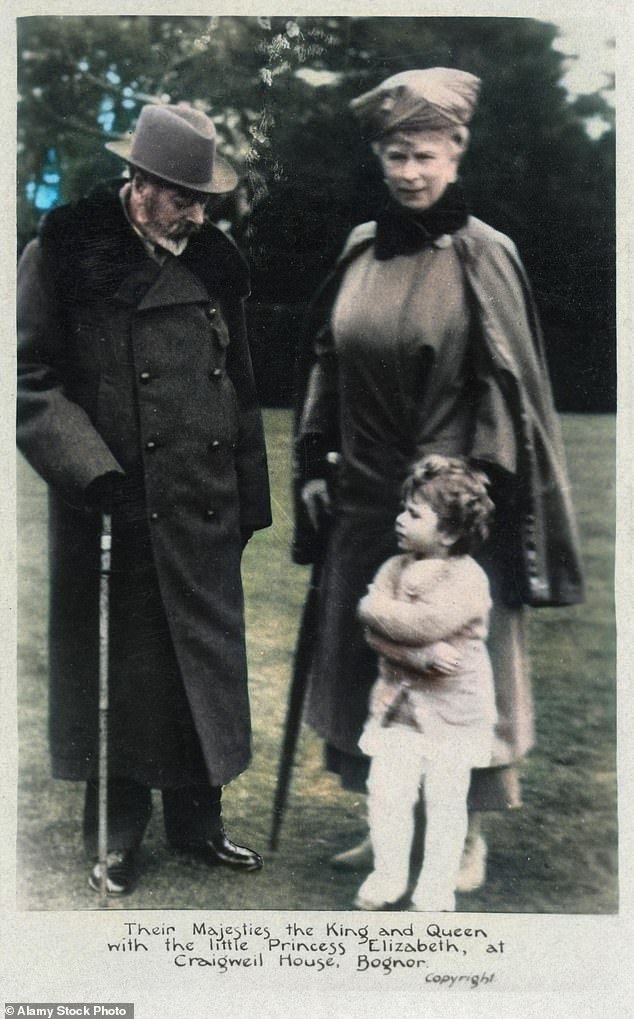
King George V and Queen Mary with their granddaughter, the future Queen, Elizabeth II
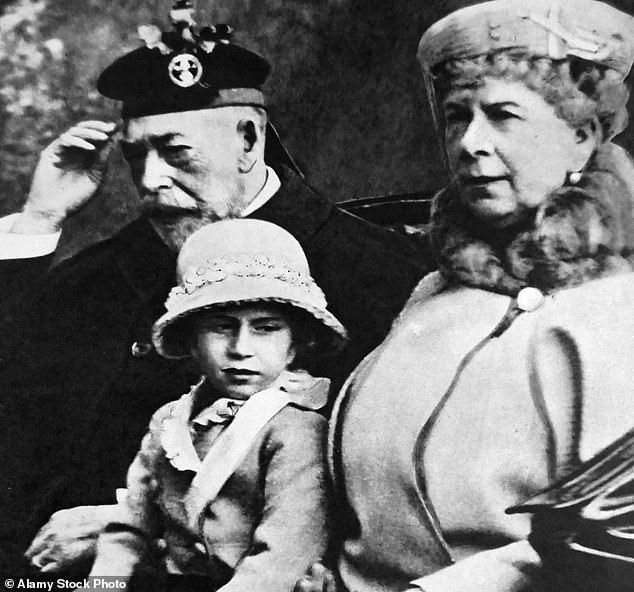
King George V and Queen Mary celebrate their 1935 Silver Jubilee with Princess Elizabeth
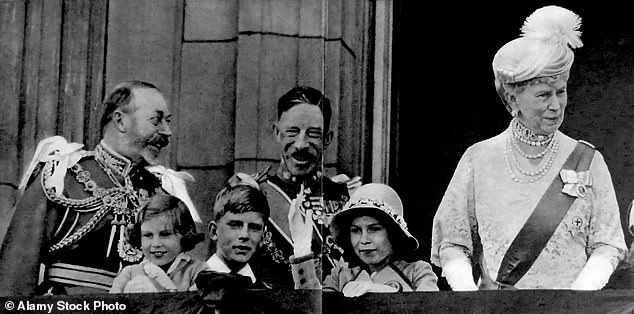
Princess Elizabeth at her grandmother’s side as they celebrate their silver jubilee
There came a time when Queen Victoria’s eye fell on the young Princess May and she decided that she would be the perfect bride for her degenerate grandson, Prince Albert Victor, Duke of Clarence – the eventual heir to the British throne.
They became engaged in 1891, the only real attraction for Princess May was the prospect of one day becoming queen.
But within a few weeks, in February 1892, the Duke of Clarence died at Sandringham.
This left Princess May in limbo and her prospects were ruined. But Queen Victoria wouldn’t let her go.
To her discomfort and embarrassment (for fear of being seen as insensitive), it was agreed that she would marry the next heir in line, Prince George, Duke of York.
This was not a love match. But soon after marriage they fell in love and supported each other throughout their lives together, from 1893 to 1936.
In 1901 they made an extended visit to Australia and in 1905 they toured India. On the death of Edward VII in 1910, they became King George V and Queen Mary.
In 1911 they returned to India for the Delhi Durbar. Their reign included World War I and the difficult 1920s.
Queen Mary suffered greatly from the abdication of Edward VIII, but during the reign of her next son, George VI, she took on the role of matriarch, even breaking tradition to attend the coronation in 1937.
She thus reintroduced important stability to the monarchy.
Queen Mary was not uneccentric. She insisted on reading while she knitted.
Apparently she fell asleep during this process, but her fingers worked somewhat imprecisely. The maid of honor would have to remove the stitches later.
She enjoyed a lewd remark. There was a dinner at Buckingham Palace. Prince Philip’s mother told George V that a Swedish official had gone to great lengths to show her sister, Crown Princess Louise, some important Swedish jewels.
He took her to a safe, which required unlocking many doors. Inside he said, “And now I’m going to open my drawers and show you my treasure!”
Queen Mary heard the king roar with laughter. She was told the punch line. “And did he?” she asked.
She took a great interest in the education of her granddaughters, the Queen and Princess Margaret, and was somewhat unimpressed with the way Queen Elizabeth (the Queen Mother) raised them.
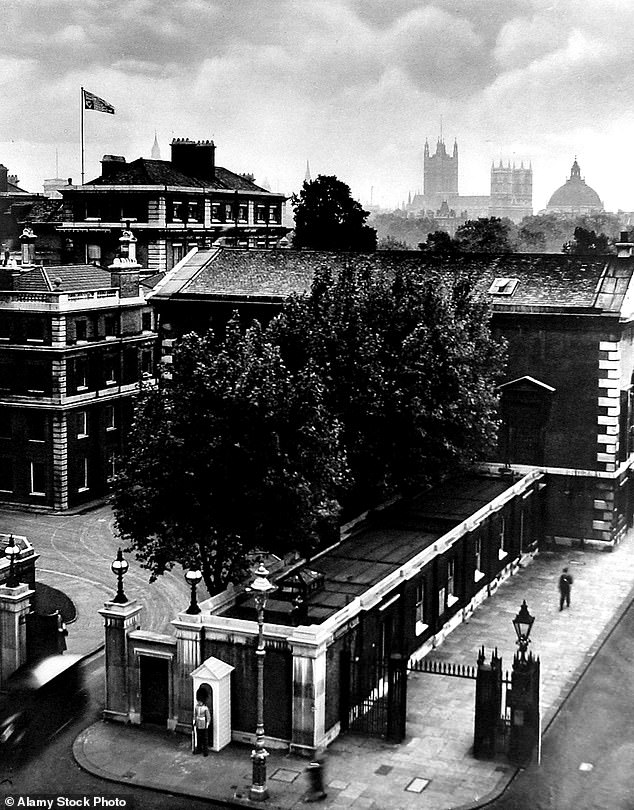
Marlborough House, with Queen Mary’s personal standard above your head
Princess Margaret had no relationship with her grandmother. Other young members of the royal family were in awe of her, although Princess Alexandra enjoyed spending time with her – often at badminton, where Queen Mary spent the Second World War.
Anthony Eden visited Sandringham in January 1953, not long before she died, and wrote: ‘She is a wonderful old lady with a mind as alert as a woman thirty years younger and more knowledgeable than most.
She would make an admirable foreign minister.”
Queen Mary died at Marlborough House shortly before the 1953 coronation.
